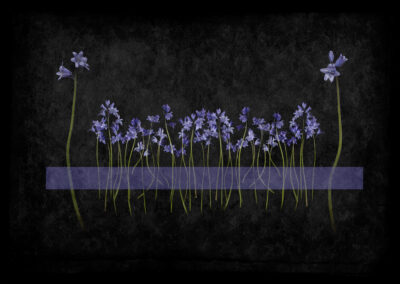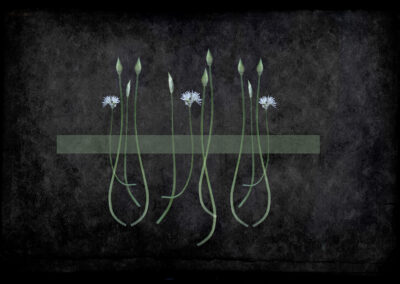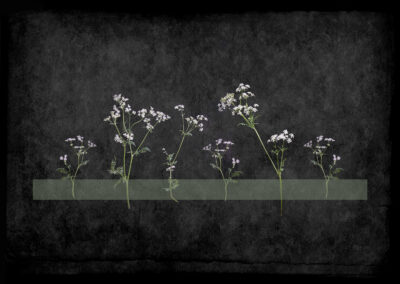
The emotional bond that exists between the woodland and our human psyche is undeniable; a place that is simultaneously associated with both refuge and peril. The impact the woodland has had on our culture and imaginations, and the way in which it, in turn, has shaped them to answer our needs. ‘The Understory’ are constructed images that challenge the deep-rooted preconceptions of landscape, memory and beauty. ‘landscape’ from its beginnings has meant a man-made artefact with associated cultural process values, it is a living link between what we were and what we have become.
Woodland provides an important defence against climate change as well as providing resilience in affected ecosystems. The potential of woodlands to soak up CO2 from the atmosphere while providing a host of other benefits for society and biodiversity is becoming increasingly recognised. Forest destruction and habitat loss threatens our future, investing in sustainable forest restoration is integral to biodiversity.
The Understory is a set of Woodland Landscapes shot in the Surrey Hills and Wester Ross in the Highlands of Scotland. Birch woodland is by far the most common in Wester Ross, woods of all sizes occur around hill crags and coastal areas. These trees support a wide range of insects, fungi and lichens. The woodlands provide important habitats for priority species such as spotted flycatcher, bullfinch and song thrush, as well as butterflies such as pearl-bordered fritillary.
‘The Understory’ hopes to raise the profile of these humble wild plants, they are so dependent on a healthy diverse woodland and in turn they can affect biodiversity. The wood anemone, in particular can only be found in ancient woodlands, a habitat that is in desperate need of protection.
‘The Understory’ is not what we see, but a way of seeing, ascribing value to the Woodland and the plants that grow beneath the canopy.
A selection of the images from the series are shown below (click to view image at full size / original format).
ABOUT MAURA JAMIESON
Maura began her training in Glasgow then moved to Plymouth where she continued to study photography at Plymouth Art School. Now living and working in London as a Lecturer and Practitioner. Maura tries to balance the demands of developing both her lecturing and personal work.
Lens-based, cameral-less, analogue and digital processes are all part of her image making. Landscape, memory, portraiture and place have established themselves as the predominant themes in her photographic work.
Website: maurajphotography.com
Instagram: @maurajamieson
CREDITS
Unless otherwise stated, all words and images in this article are © Maura Jamieson










